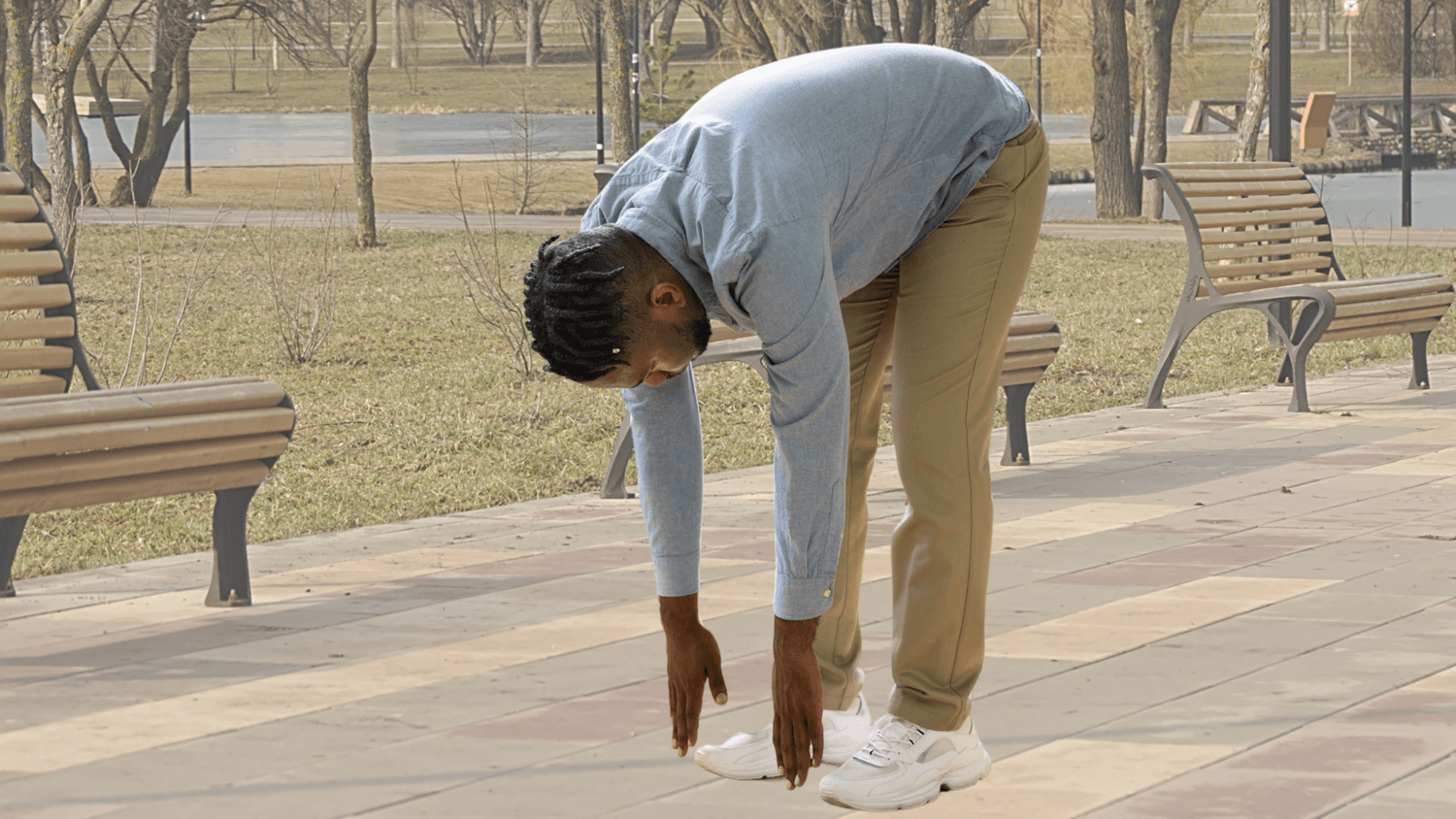Walking with Sciatica: A Guide to Managing Pain and Improving Your Stride

Are you tired of feeling like every step you take is a painful reminder of your sciatica? You're not alone. Millions of people suffer from sciatica, and for many, walking can be a major trigger for discomfort. Sciatica and walking don't have to be mutually exclusive, though. With the right approach, you can manage your sciatic pain when walking and even improve your stride.
Sciatica is a common condition characterized by pain, numbness, or tingling in the lower back and legs. It's often caused by a herniated disk, bone spur, or muscle strain that puts pressure on the sciatic nerve. When you walk, you may experience a sharp, shooting pain or a dull ache that radiates down your leg. This is sciatica when walking, and it can be debilitating.
But there's hope. By understanding the relationship between sciatica and walking, you can take steps to alleviate your symptoms and get back to living an active, pain-free life. In this guide, we'll explore the causes of sciatic pain when walking and provide practical tips for managing your symptoms and improving your stride.
Understanding Sciatica and Walking
To effectively manage sciatic pain when walking, it's essential to understand the relationship between sciatica and walking. Sciatica is a common condition characterized by pain, numbness, or tingling in the lower back and legs. When you walk, you may experience a sharp, shooting pain or a dull ache that radiates down your leg. This is sciatica when walking, and it can be debilitating.
The Sciatic Nerve and its Role in Walking
The sciatic nerve is the longest nerve in the human body, extending from the lower back down to the legs. It plays a crucial role in controlling the muscles in the back of the knee and lower leg. When you walk, the sciatic nerve helps to facilitate the movement of your legs, allowing you to move with ease and precision. However, when the sciatic nerve becomes irritated or compressed, it can cause pain, numbness, and tingling in the lower back and legs.
This irritation or compression can occur due to various factors, such as a herniated disk, bone spur, or muscle strain. When you walk, the pressure on the sciatic nerve can increase, leading to sciatic pain when walking. Understanding the role of the sciatic nerve in walking can help you identify the underlying causes of your sciatica and take steps to alleviate your symptoms.
Common Causes of Sciatica When Walking
Several factors can contribute to sciatica when walking. Some of the most common causes include:
- Poor posture: Walking with poor posture can put additional pressure on the sciatic nerve, leading to pain and discomfort.
- Muscle imbalances: Weak or tight muscles in the lower back and legs can cause the sciatic nerve to become irritated or compressed.
- Underlying medical conditions: Conditions such as herniated disks, bone spurs, and spinal stenosis can cause sciatica when walking.
- Overuse or repetitive strain: Walking long distances or engaging in repetitive activities can cause strain on the sciatic nerve, leading to pain and discomfort.
- Footwear: Wearing shoes that are too tight or don't fit properly can cause pressure on the sciatic nerve, leading to pain and discomfort.
By understanding the common causes of sciatica when walking, you can take steps to prevent and manage your symptoms. In the next section, we'll explore practical tips for managing sciatic pain when walking and improving your stride.
Symptoms of Sciatica When Walking
When you experience sciatica and walking becomes a painful activity, it's essential to identify the severity of your symptoms. Recognizing the signs and symptoms of sciatica when walking can help you take the necessary steps to alleviate your discomfort and prevent further irritation.
Identifying the Severity of Sciatica Symptoms
To assess the severity of your sciatica symptoms, you can use a pain scale. This simple tool allows you to rate your pain from 0 to 10, with 0 indicating no pain and 10 indicating extreme pain. By monitoring your pain levels over time, you can identify patterns and changes in your symptoms.
For example, you may notice that your pain is more severe in the morning or after a long walk. By tracking these changes, you can adjust your daily activities and treatment plan to better manage your sciatica.
In addition to using a pain scale, pay attention to the following symptoms:
- Pain or numbness in the lower back, buttocks, or legs
- Tingling or burning sensations in the legs or feet
- Weakness or fatigue in the legs or feet
- Difficulty walking or standing due to pain or discomfort
By monitoring these symptoms and using a pain scale, you can gain a better understanding of your sciatica and develop an effective plan to manage your pain and improve your mobility.
Managing Sciatica Pain When Walking
When you experience sciatica and walking becomes a painful activity, it's essential to take proactive steps to manage your symptoms and prevent further irritation. While it may seem counterintuitive, incorporating stretching and strengthening exercises into your daily routine can help alleviate sciatica pain when walking.
Stretching Exercises for Sciatica Relief
Stretching can help relieve tension on the sciatic nerve, reducing pain and discomfort. Here are a few stretches you can try:

- Hamstring stretch: Stand with your feet shoulder-width apart, then bend forward at the hips to touch your toes. Hold for 30 seconds and repeat 3-4 times.
- Piriformis stretch: Sit on the floor with your affected leg crossed over your other leg. Place your hand on the knee of the crossed leg and pull it toward your opposite shoulder. Hold for 30 seconds and repeat 3-4 times.
- Knee to chest stretch: Lie on your back and bring one knee toward your chest. Hold for 30 seconds and repeat 3-4 times on each side.
Remember to breathe deeply and slowly while stretching to help relax your muscles and reduce tension on the sciatic nerve.
Strengthening Exercises for Sciatica Prevention
Strengthening the muscles that support the sciatic nerve can help prevent sciatica pain when walking. Here are a few exercises you can try:
- Core strengthening exercises: Engage in activities that strengthen your core muscles, such as planks, bridges, and pelvic tilts.
- Gluteal strengthening exercises: Try exercises like squats, lunges, and deadlifts to strengthen your gluteal muscles.
- Leg strengthening exercises: Engage in activities that strengthen your leg muscles, such as leg press, leg curls, and leg extensions.

Remember to start slowly and gradually increase the intensity and duration of your exercises as your body allows. It's also essential to listen to your body and stop if you experience any pain or discomfort.
By incorporating stretching and strengthening exercises into your daily routine, you can help manage sciatica pain when walking and prevent further irritation.
Modifying Walking Techniques to Reduce Sciatica Pain
When you experience sciatica and walking becomes a painful activity, it's essential to take proactive steps to manage your symptoms and prevent further irritation. Modifying your walking techniques can help alleviate sciatica pain when walking and improve your overall mobility.
Understanding the Impact of Walking on Sciatica
Walking can exacerbate sciatica pain due to the repetitive motion and pressure on the sciatic nerve. However, by making a few simple adjustments to your walking technique, you can reduce the strain on your sciatic nerve and alleviate pain.
Using Orthotics and Assistive Devices
Using orthotics and assistive devices, such as canes or walkers, can help alleviate sciatica pain when walking. These devices can provide additional support and stability, reducing the pressure on the sciatic nerve. Orthotics, such as shoe inserts or arch supports, can also help redistribute pressure and alleviate pain.

When selecting an assistive device, consider the following factors:
- Stability: Choose a device that provides stability and support, such as a cane or walker.
- Adjustability: Select a device that is adjustable, allowing you to customize the fit and support.
- Comfort: Opt for a device that is comfortable to use, with cushioning and ergonomic design.
By incorporating orthotics and assistive devices into your walking routine, you can reduce sciatica pain and improve your overall mobility. Remember to consult with a healthcare professional to determine the best device for your specific needs.
When to Seek Medical Attention for Sciatica
If you're experiencing sciatica and walking has become a painful activity, it's essential to know when to seek medical attention. While some cases of sciatica can be managed with self-care and lifestyle modifications, others may require medical intervention to prevent further complications.
Diagnosing Underlying Medical Conditions
Diagnosing underlying medical conditions is crucial in managing sciatica when walking. Conditions such as herniated disks, bone spurs, and spinal stenosis can cause sciatica, and if left untreated, can lead to further complications. A healthcare professional can perform a physical examination, take a medical history, and order diagnostic tests such as X-rays, CT scans, or MRI scans to determine the underlying cause of your sciatica.
In some cases, sciatica can be a symptom of a more serious underlying condition, such as a spinal tumor or infection. If you experience any of the following symptoms, seek medical attention immediately:
- Sudden and severe pain in your lower back or legs
- Numbness or tingling in your legs or feet
- Weakness or paralysis in your legs or feet
- Loss of bladder or bowel control
- Fever, chills, or other signs of infection
By seeking medical attention promptly, you can receive proper diagnosis and treatment, preventing further complications and improving your overall quality of life.
Conclusion
Managing sciatica and walking requires a proactive approach to alleviate pain and improve overall health. By understanding the relationship between sciatica and walking, you can take control of your symptoms and prevent further irritation. Remember, sciatica when walking is a common condition that can be managed with the right techniques and strategies.
Don't let sciatic pain when walking hold you back from living an active, pain-free life. By incorporating stretching and strengthening exercises into your daily routine, modifying your walking techniques, and seeking medical attention when necessary, you can reduce sciatica pain and improve your overall mobility.
Take the first step towards managing your sciatica and walking today. Start by assessing your symptoms, identifying the underlying causes of your sciatica, and developing a personalized plan to alleviate your pain. With the right approach, you can overcome sciatica and walking challenges and achieve a healthier, more active lifestyle.
What will you do today to take control of your sciatica and walking? Will you start with simple stretches, modify your walking technique, or seek medical attention? Whatever your approach, remember that managing sciatica and walking is a journey, and every step forward is a step towards a healthier, pain-free life.

You Can Fix Your Back...
You Just Need The Right Program
- Reduce your sciatic pain in days, not weeks.
- No more endless doctor visits—take control at home.
- Empower yourself with a program backed by real results.
- 2024 Sciatica Self Treatment / Back Pain Self Treatment














